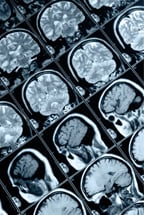Marc Savard and Don Hasselback have raised awareness of concussions and the toll head trauma can take on the individual, as an athlete and in everyday life.
A concussion results from head trauma and can result in confusion, memory loss, and loss of consciousness. Concussions are a common injury, with over 1 million cases reported per year in the United States alone. Sports commonly associated with concussion include football, soccer, hockey, boxing, lacrosse and of course, hockey. As many as 10% of college and 20% of high school football players will suffer from a concussion annually.
confusion, memory loss, and loss of consciousness. Concussions are a common injury, with over 1 million cases reported per year in the United States alone. Sports commonly associated with concussion include football, soccer, hockey, boxing, lacrosse and of course, hockey. As many as 10% of college and 20% of high school football players will suffer from a concussion annually.
What are the Symptoms?
Symptoms of a concussion include headache, dizziness, nausea and or vomiting, slurred or incoherent speech, and loss of balance and coordination. Symptoms may develop immediately after injury or develop over a period minutes to hours.
Grading a Concussion
There are 3 grades of concussion. Grade 1 is the least severe and involves “transient” confusion lasting less than 15 minutes and without loss of consciousness. Grade 2 is more significant with symptoms of confusion or mental status changes lasting more than 15 minutes but without loss of consciousness. Any concussion resulting in loss of consciousness is categorized as Grade 3. The more information you have about your athlete prior to injury the better. For example, pre-season (pre-injury) baseline testing helps the physician gauge and grade the extent of injury.
Returning to the Sport
There are several well-published guidelines to help physicians determine when it is safe for athletes to return to play after a concussion. The guidelines are somewhat controversial, but all agree no player should return to sports until symptoms are completely resolved. Patients with symptoms lasting more than 15 minutes or who exhibit memory loss should be restricted from sports participation for at least 1 week. Any player who loses consciousness should be evaluated in the emergency room by medical personnel. For a Grade 3 concussion, some guidelines suggest that the athlete should not return to play for a minimum of 1 month or longer. If a player sustains multiple concussions, some suggest that the season should be terminated. It is important that players, parents, coaches, trainers and physicians understand the serious nature of concussions.
Diagnostic Testing for Concussion
Imaging of the brain with CT or MRI is usually not indicated unless the patient’s symptoms are severe or if there has been loss of consciousness. MRI and CT scans of patient’s with concussion are usually normal in the acute phase, although on rare occasions edema and bleeding in or around the brain can be seen. Follow-up CT and MRI scans can show brain atrophy. Brain function measurements using MRI can be abnormal, corresponding to decreased performance on neuropsychological testing.
Autopsy studies of former football players and boxers have shown brain injury due to multiple and repetitive head trauma resulting in chronic traumatic encephalopathy with accumulation of large amounts of tau protein in areas of the brain responsible for mood, emotion and executive functioning. These same proteins are found in patients with Alzheimer’s disease.
Safety Gear and Education
Protective gear such as helmets and mouth guards can reduce the incidence of concussion, but cannot completely prevent against it. Education on the risks associated with concussion is essential.
Going Forward
Prompt diagnosis, appropriate restrictions, and treatment may reduce the risk of further injury, but the long term consequences are not fully known.
Concussion is a very serious and potentially life changing/threatening disorder. To assist in the medical evaluation secure a baseline of your athlete and be sure he/she wears appropriate safety gear to minimize impact and trauma.



